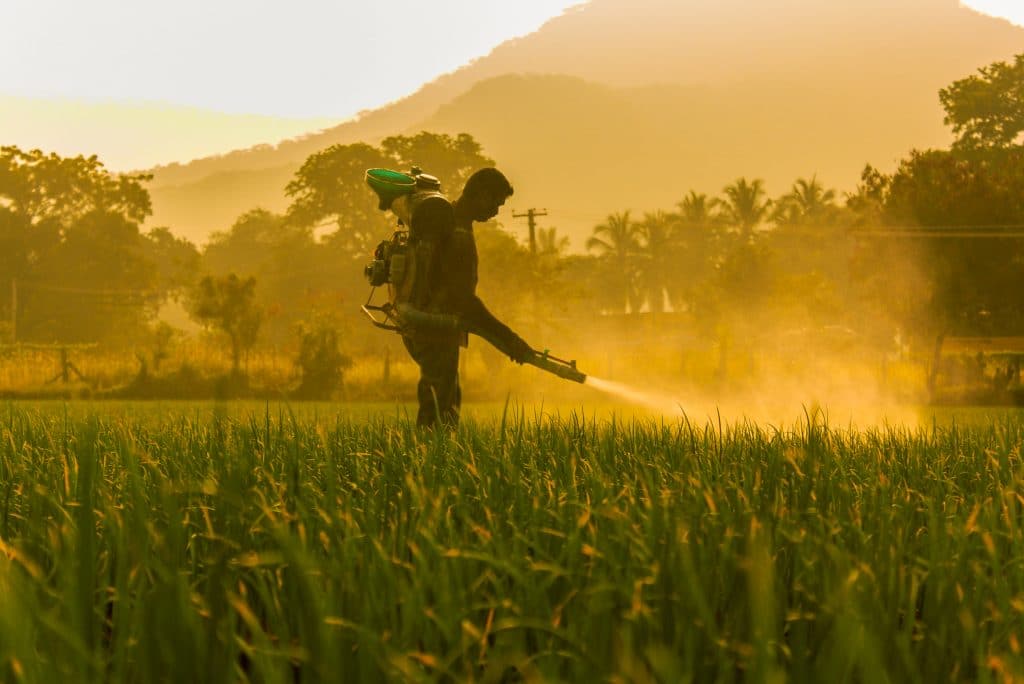- Blog
- Food & Agriculture
- Bee Action
- The human cost of a perfect lawn
The human cost of a perfect lawn

Donate Now!
Your contribution will benefit Friends of the Earth.
Stay Informed
Thanks for your interest in Friends of the Earth. You can find information about us and get in touch the following ways:
by Valeria Paredes, food and agriculture fellow
Every year, 80 million pounds of pesticides are used on U.S. lawns to maintain attractive, lush greenery. In many cities across the country, Latinx immigrant workers are the primary labor force responsible for lawn care. These maintenance and landscape workers, or jardineros, bear the brunt of residential pesticide use. The impacts are largely under-examined despite the fact that lawn pesticide use can be up to 10 times more intensive per acre than farms. As the demand for residential lawn maintenance grows, exposure rates are likely to increase as well, demonstrating that pristine lawns come at a high cost, especially for the most marginalized workers.
There are an estimated 872,370, landscape workers in the U.S., mostly concentrated in the cities of New York, Los Angeles, Chicago, Dallas and Miami. Each state has its own set of pesticide regulations that govern use of pesticides for professional landscaping, yet it can be difficult to ensure pesticides are consistently applied within a “safe” threshold. Due to the informal nature of the jardinero economy across the U.S., with complex social and cultural dynamics at play, it is nearly impossible to capture the full scope of the industry or to quantify workers’ pesticide use and exposure.
A recent toxicology analysis conducted by Beyond Pesticides and Friends of the Earth brings to light just how toxic many of the lawn care products are that jardineros commonly use. The analysis found that half of the weed killers sold at the largest home and garden stores, Home Depot and Lowe’s, include chemicals classified as “highly hazardous pesticides” and linked to detrimental human health effects. The ingredients in commonly used herbicides, such as 2,4-D — a chemical from the Vietnam War defoliant Agent Orange — are associated with neurotoxicity, reproductive issues and cancer, which make our own front yards and homes health-compromising sites.
While consumers can choose to avoid using toxic substances in their own gardens and lawns, not everyone has the privilege of choice. Lawn maintenance workers may be expected to apply pesticides at a site even if they don’t have the proper licensing or protective equipment to do so. They may also be impeded by language barriers, may be unfamiliar with local or state ordinances, or may fear employer retaliation if they raise questions about the chemicals they’re using.
Citizens across the United States recognize the urgency of this environmental health issue and are organizing in support of pesticide reform policies. They are also working to make organic pest management the norm through community education and engagement. The Farmworker and Landscaper Advocacy Project in Illinois is one of the few organizations in the country that takes a worker-centered approach through litigation, education and providing financial assistance for workers’ families.
What we really need to protect all people who are exposed to pesticides — jardineros, farmworkers, homeowners, children playing at parks and schools — is for the U.S. Environmental Protection Agency (EPA) to follow the science and restrict harmful chemicals. The EPA allows use of over 80 pesticides that have been banned in other countries due to concern about their impact on human health. The EPA has also approved more than 100 new pesticide products containing ingredients widely deemed to be highly hazardous between 2017-2018.
While we fight for an EPA that protects people over industry profits, we can demand that the stores where jardineros and the rest of us purchase lawn care products, like Home Depot and Lowe’s, take the safety of their products seriously. We must also join together in our communities to make our neighborhoods safer and more equitable for all.
